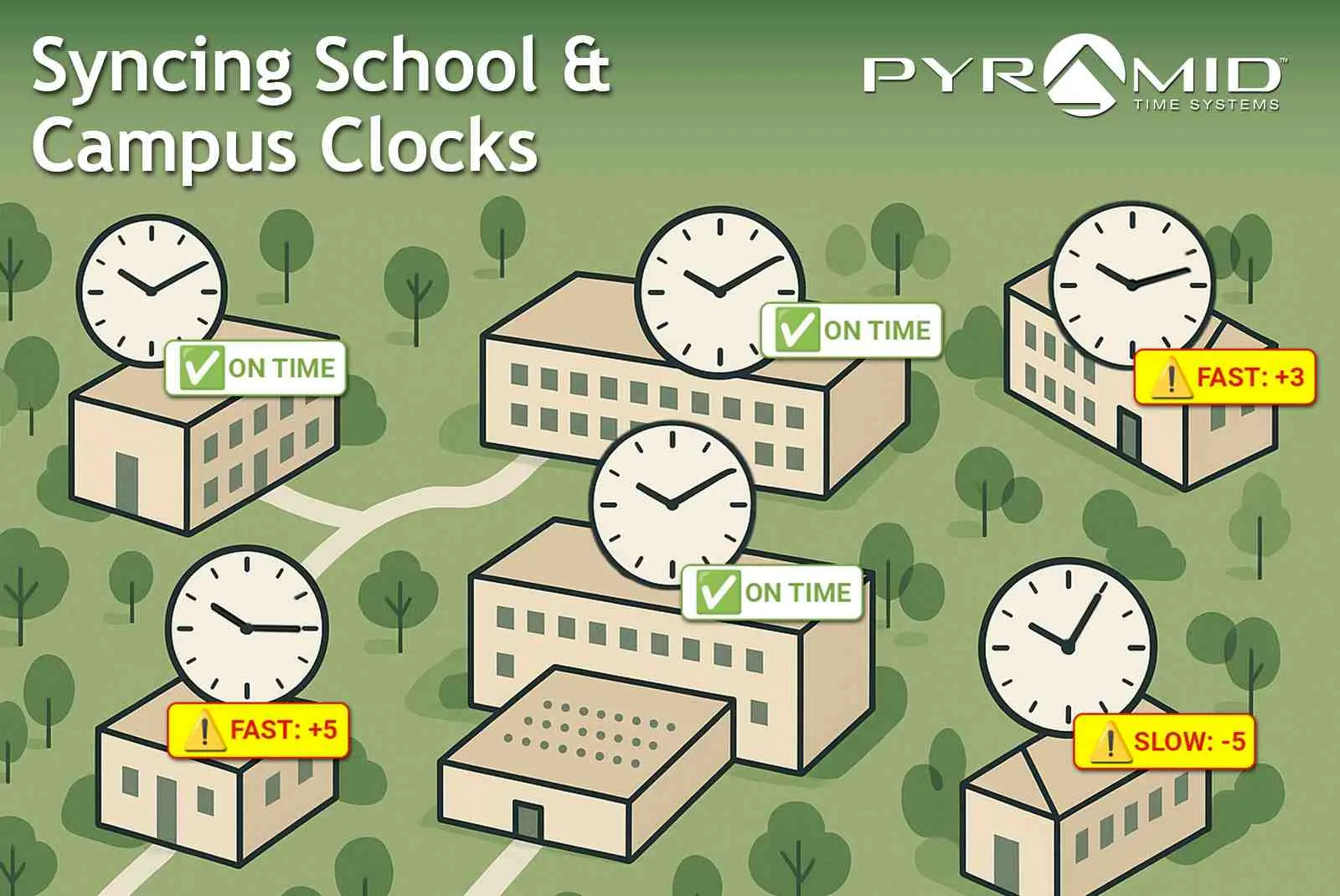
Time drives every part of education. Students move from class to class. Teachers follow tight schedules. Buses run on fixed routes. Exams start and stop at precise times. If the clocks don’t agree, operations fall out of sync. From classrooms and testing centers to libraries, offices, and maintenance areas, synchronized time keeps everything running smoothly. This article explores why accurate time systems matter and how they benefit school administrators, teachers, and students.
Educational environments depend on structure. From the first bell to the last bus, every part of the day relies on accurate time. When clocks across a school or campus stay in sync, schedules run smoothly. Classes start on time. Exams begin and end fairly. Staff transitions happen without confusion. Transportation stays reliable.
Without synchronization, even minor time differences cause issues. A few minutes’ drift can lead to missed instruction, uneven testing conditions, or delayed bus departures. Synchronized clocks create consistency. They help students and staff stay on time. In a setting where time shapes the entire day, alignment makes a real difference.
Investing in a modern synchronized clock system saves money over the long run. Older analog or manual clocks need regular adjustments. Outdated wired systems require constant upkeep and costly replacement parts. Staff spend time trying to maintain them, replace dead clocks, and more. Maintenance costs add up quickly.
Modern synchronized clock systems require less upkeep, auto-adjust for daylight savings time or time drift, ensuring year-round accuracy. Clock synchronization also improves efficiency, safety, and overall morale. Aligned schedules reduce missed pickups, late students, and staffing mix-ups. The result is less disruption, lower labor costs, and better operational efficiency.
RF Wireless and PoE clocks reduce the need for complex wiring. Wireless installs can be faster and less expensive, especially in older buildings or large campuses. PoE clocks use existing Ethernet networks, eliminating the need for separate power supplies.
Replacing failing or outdated master clock systems saves money by avoiding ongoing repairs. A legacy upgrade reuses some of the existing infrastructure, which helps lower material and labor costs.
These systems are built to last and easy to expand. Once installed, they continue delivering value for years without major intervention.
For IT departments and facility managers, installation and compatibility are key. Pyramid’s systems are built with ease of use in mind.
RF Wireless Systems – These systems use a central radio transmitter to send time signals to wireless clocks across campus. They’re ideal when running new cables is costly or not possible. Once installed, the system self-corrects and maintains accuracy.
PoE Network Clocks – These clocks connect directly to your building’s Ethernet. One cable delivers both power and time data. No batteries are needed. Setup only requires a connection to a PoE network switch. These clocks sync using NTP (Network Time Protocol), making them accurate and reliable.
Legacy System Upgrades – Many older campuses still have analog clocks or wired master clock systems. Pyramid’s clocks can work with existing wiring, which keeps labor costs low. Clocks can often be mounted in the same locations, reducing install time.
Every business has unique needs, buildings, and other factors that should be considered when looking at a synchronized clock system. Pyramid staff can help design a system to work with your unique needs and infrastructure to maximize utility and minimize costs.
Pyramid offers proven synchronization solutions. Schools, colleges, and training centers across the country rely on our systems for consistent time, simplified maintenance, and long-term cost savings. We support both administrators and installers with tools and training. Our Sync Buying Guide blog series walks through key decision points and installation tips. Whether you’re building a new facility or upgrading a 40-year-old clock system, we’ve got a path forward.
Visit our website to explore the best sync system for your school. Reach out for a quote or consultation from Pyramid’s sync team. Bring accurate time to your entire campus.
Read More: